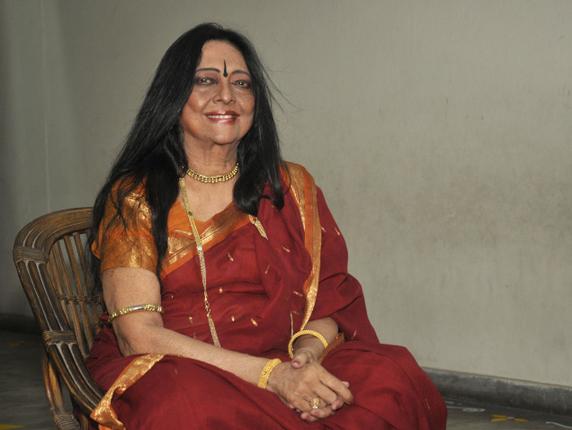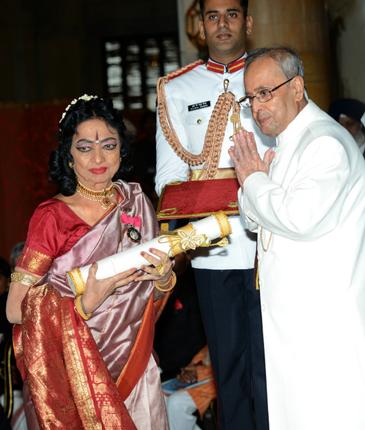
Padma Vibhushan Yamini Krishnamurti says that she is planning a production that speaks through rhythm alone.
In an era that lacks icons there is often enough a marked debate around the conferment of the Padma awards, by which the Government of India recognises the achievements of eminent civilians in any field. But Yamini Krishnamurti is a rare icon in this world. So the great classical dancer being conferred with the Padma Vibhushan, the country’s second highest civilian honour, can hardly give rise to a dissenting opinion.

She received the award, announced in January, from the President this week. Yamini exemplifies a person immersed in the practice, development and contemplation of her art. Such immersion leaves scant room for pretence. Art may be described as an imitation or a reflection of life, but at the heart of true replication is an unquenchable, childlike honesty. Thus her joy at being named among the Padma Vibhushan recipients of the country is palpable.
“Bharatastu yashovaham,” she quotes in Sanskrit, “The glory of Bharat (India) is our culture.” The veteran explains, “It was said, when talented people are recognised the country will prosper.”
Talented artists have been many over the decades since independence. What marks out Yamini as a unique performer is that she made each dance form she essayed her personal expression. In the process she gained mastery over Bharatanatyam, Kuchipudi and Odissi. She was considered not merely a brilliant performer of Bharatanatyam, but also largely responsible for putting Kuchipudi on the world map.
Yamini has performed through the decades across the continents. Her combination of dancing energy and mythological richness has won her admirers everywhere. She was a young, fiery dancer in the early decades after independence, when India’s educated elite took pride in rediscovering the country’s indigenous traditions, philosophies and arts.
It was back in 1960 that she performed in Pakistan. The decade also saw her tour Afghanistan and Iran. Why these countries come especially to mind in today’s polluted climate is that the classical arts are often sought to be hemmed into a closed definition circumscribed by fundamentalist views.
On what is the place of classical dance in such a scenario, the maestro emphasises, “The dance has nothing to do with religion. Beauty is the most powerful thing for all human beings. Other things are not essential.” She continues, “This is my religion. When I see a beautiful tree, a beautiful lady, I go gaga! Beauty is the most essential thing.”
It is the opportunity to create and contemplate beauty that makes her particularly happy to teach dance. “I am making a lot of youngsters dance,” she notes, describing the joy of seeing that “a person who doesn’t even know how to walk, walks out beautifully like a swan.”
Apart from the precision of her postures, the heady speed of her compositions and the variety of themes she presented, learning from her gurus and guided by the intellectual inputs of her father Krishnamurti, she is known for her brilliance in grasping the mathematics of rhythm.
Today the unparalleled dancer takes the stage relatively seldom. However, she remains in her cosmos of light and rhythm through classes and workshops.
The nature of a performing career makes it understandable if not palatable that even the greatest of artists are easily ignored once they leave centre stage. Not so for this veteran. “I see this recognition as essential for further creative inspiration of art. So I am very thankful I got this award, and it gives me great pleasure to continue my work,” she says.
If life depends on breathing, says Yamini that is the quintessential rhythm. Thus, on her plans, she says, she looks forward to creating a production that speaks through rhythm alone. “That’s my inspiration,” she says. “I’m waiting for that.”
source: http://www.thehindu.com / The Hindu / Home> Features> Friday Review / Anjana Rajan / March 31st 2016